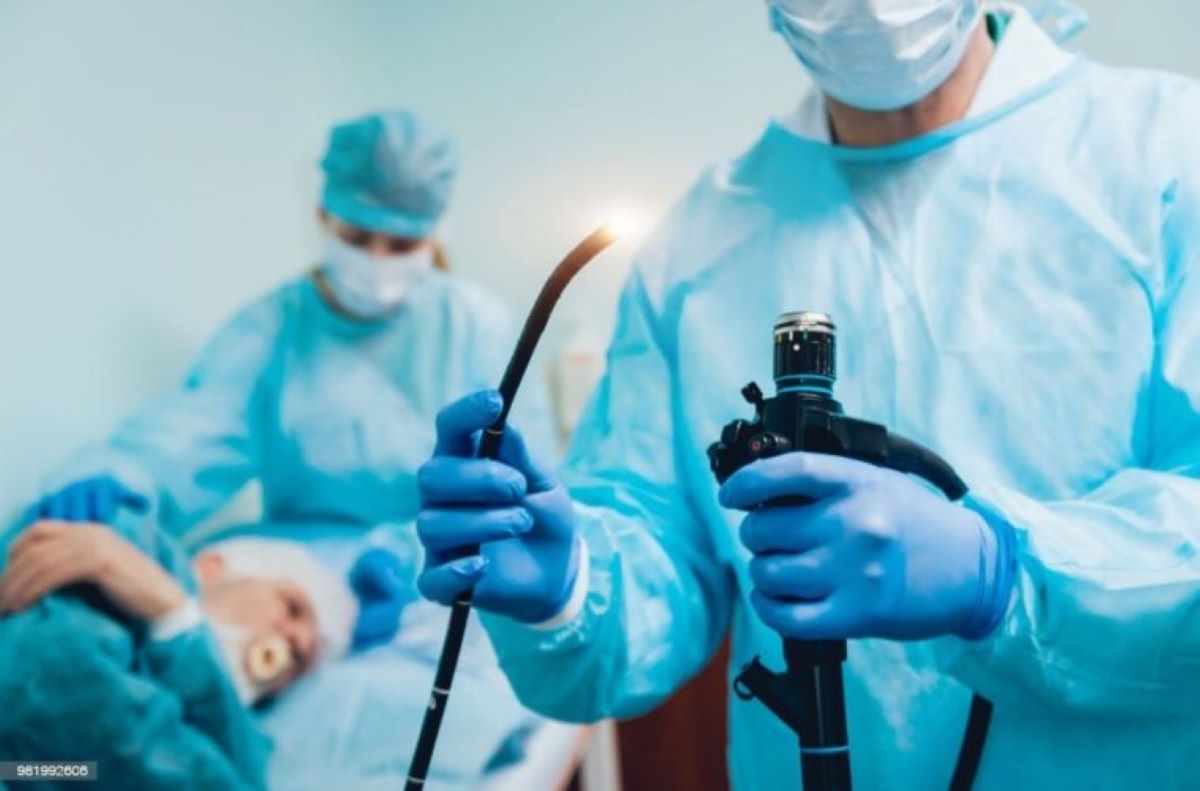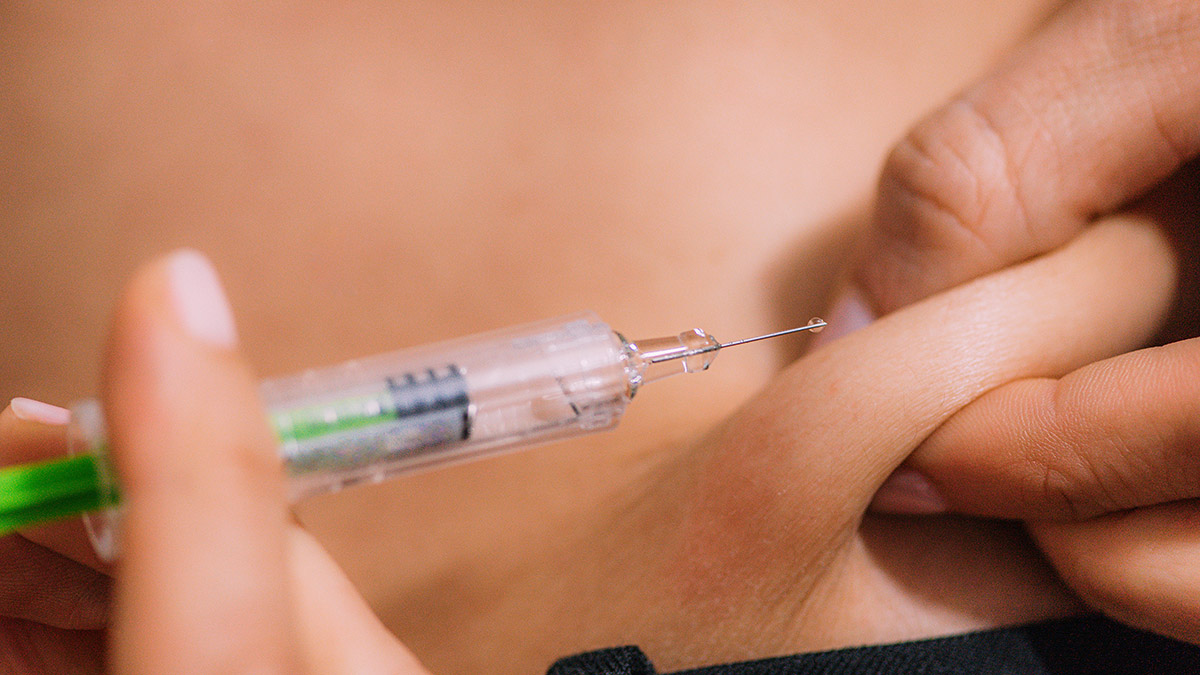Home>Finance>How Much Does A Hysteroscopy Cost With Insurance?


Finance
How Much Does A Hysteroscopy Cost With Insurance?
Published: November 17, 2023
Find out the cost of a hysteroscopy with insurance coverage. Gain insights into financing options for this medical procedure.
(Many of the links in this article redirect to a specific reviewed product. Your purchase of these products through affiliate links helps to generate commission for LiveWell, at no extra cost. Learn more)
Table of Contents
Introduction
When it comes to medical procedures, understanding the cost can often be a concern for patients. This is especially true for procedures such as hysteroscopy, which is a common diagnostic tool used in gynecology. Hysteroscopy involves the insertion of a thin, lighted tube called a hysteroscope into the uterus to examine the uterine lining and diagnose any abnormalities. While this procedure is typically covered by insurance, the cost can vary depending on several factors.
It’s essential to have a clear understanding of the average cost of hysteroscopy with insurance coverage, as well as any out-of-pocket expenses that may apply. This knowledge can help patients make informed decisions about their healthcare and budget accordingly.
In this article, we will explore the cost of hysteroscopy with insurance coverage. We will discuss the factors that can affect the cost, the average costs patients can expect with insurance, and tips for minimizing out-of-pocket expenses. By the end of this article, you will have a comprehensive understanding of hysteroscopy costs and how insurance can help alleviate the financial burden.
Before diving into the specifics of hysteroscopy costs, it’s important to note that insurance coverage can vary depending on your specific plan and provider. Always consult with your insurance company and healthcare provider to get accurate and up-to-date information on coverage and costs.
Understanding Hysteroscopy
Hysteroscopy is a medical procedure that allows doctors to examine the inside of the uterus using a hysteroscope, a thin, lighted tube. This procedure is commonly done to diagnose and treat various gynecological conditions, such as abnormal uterine bleeding, fibroids, polyps, and infertility issues.
During a hysteroscopy, the hysteroscope is inserted through the vagina and cervix and into the uterus. The hysteroscope is equipped with a camera that provides real-time images of the uterine lining. This allows the doctor to visually inspect the uterus and identify any abnormalities, such as polyps, fibroids, or adhesions.
In addition to the diagnostic purpose, hysteroscopy can also be used for therapeutic interventions. This includes procedures like removing polyps or fibroids, treating uterine adhesions, or performing endometrial ablation to treat excessive menstrual bleeding.
One of the advantages of hysteroscopy is its minimally invasive nature. Unlike traditional surgery, hysteroscopy generally does not require any abdominal incisions. Instead, it is typically performed on an outpatient basis using local or general anesthesia.
Hysteroscopy is considered a safe procedure, but like any medical intervention, it carries some risks. These risks may include infection, bleeding, uterine perforation, or damage to surrounding organs. However, these complications are rare and can usually be managed effectively by experienced healthcare professionals.
Overall, hysteroscopy is a valuable tool in diagnosing and treating various gynecological conditions. It allows doctors to obtain clear images of the uterine cavity and perform necessary interventions, leading to more accurate diagnoses and targeted treatment strategies.
Factors Affecting Hysteroscopy Cost with Insurance Coverage
Several factors can influence the cost of hysteroscopy with insurance coverage. It’s important to understand these factors when estimating the potential expenses associated with the procedure:
- Insurance Coverage: The level of coverage provided by your insurance plan plays a significant role in determining the cost of hysteroscopy. Some insurance policies cover the full cost of the procedure, while others may require a deductible or co-payment. It is crucial to review your policy carefully and reach out to your insurance company to understand the specifics of your coverage.
- Network Provider: Insurance companies often have a network of healthcare providers with whom they have negotiated rates. If you choose an in-network provider, you may benefit from lower costs due to these negotiated rates. However, if you decide to go out-of-network, you may be subject to higher out-of-pocket expenses.
- Location: The location where the hysteroscopy is performed can also impact the cost. Medical services in certain areas or cities may be more expensive than others. For example, procedures performed in urban areas might have higher costs compared to rural regions. It’s important to consider the location when estimating the overall expenses.
- Diagnostic vs. Therapeutic Hysteroscopy: The purpose of the hysteroscopy, whether it is solely for diagnostic purposes or includes therapeutic interventions, can affect the cost. Diagnostic hysteroscopy, which is used for examination and diagnosis, is generally less expensive compared to therapeutic hysteroscopy, which involves additional procedures such as polyp or fibroid removal.
- Additional Procedures and Tests: Depending on the findings during the hysteroscopy, additional procedures or tests may be necessary. This can include endometrial biopsies, cervical dilation, or other interventions. These additional procedures will add to the overall cost of hysteroscopy.
It’s important to keep in mind that these factors are not exhaustive, and there may be other elements specific to your insurance plan and healthcare provider that can influence the cost of hysteroscopy. Consulting with your insurance company and healthcare provider will provide the most accurate information regarding your particular situation.
Average Cost of Hysteroscopy with Insurance
The average cost of hysteroscopy with insurance coverage can vary depending on several factors, including the ones mentioned earlier. However, it can provide a general idea of what patients can expect to pay for this procedure.
On average, the cost of hysteroscopy with insurance coverage ranges from $500 to $3,000. This cost includes the hysteroscopy procedure itself, as well as any necessary diagnostic tests or additional procedures that may be performed during the hysteroscopy.
It’s important to note that this range is an estimate and can vary based on factors such as geographical location, specific insurance coverage, and individual healthcare provider rates. Different regions and healthcare facilities may have different pricing structures, so it’s always a good idea to check with your insurance company and healthcare provider for more accurate cost estimates.
If you have insurance coverage, it’s also essential to consider factors such as deductibles, co-payments, and coinsurance. Some insurance plans require patients to pay a portion of the cost out-of-pocket, while others may cover the entire cost of the hysteroscopy procedure after deductibles are met.
Overall, while the average cost of hysteroscopy with insurance coverage can provide a ballpark figure, it’s crucial to consult with your insurance provider and healthcare provider to get a more accurate estimate based on your specific situation.
Out-of-Pocket Expenses for Hysteroscopy with Insurance
While insurance can help cover a significant portion of the cost of hysteroscopy, there are still potential out-of-pocket expenses that patients may need to consider. These expenses can vary depending on your insurance plan and specific circumstances:
Deductibles: An insurance deductible is the amount you must pay out-of-pocket before your insurance coverage kicks in. For hysteroscopy, you may need to meet your deductible before your insurance starts covering the procedure. The deductible amount can vary depending on your insurance plan, so it’s important to understand what deductible you are responsible for.
Co-payments or Co-insurance: Depending on your insurance plan, you may be required to pay a fixed co-payment or a percentage of the cost of the hysteroscopy as co-insurance. For example, your insurance plan may require you to pay 20% of the total cost of the procedure. It’s important to review your insurance policy to understand your co-payment or co-insurance obligations.
Out-of-Network Costs: If you choose to receive hysteroscopy services from an out-of-network provider, your insurance coverage may be limited, resulting in higher out-of-pocket expenses. It’s essential to check with your insurance company to understand the coverage difference between in-network and out-of-network providers.
Additional Services: Depending on the specific circumstances and findings during the hysteroscopy, additional services or procedures may be required. These additional services, such as biopsies or surgical interventions, may have additional costs that are not fully covered by insurance.
Pre-authorization and Referral Requirements: Some insurance plans may require pre-authorization or a referral from your primary care physician before undergoing a hysteroscopy. Failure to obtain these can result in denied coverage or increased out-of-pocket expenses, so it’s essential to understand your insurance plan’s requirements.
To determine your out-of-pocket expenses for hysteroscopy, it is crucial to review your insurance policy, contact your insurance provider, and consult with your healthcare provider. They can provide you with detailed information about your specific coverage and any potential out-of-pocket costs you may incur.
Tips for Minimizing Hysteroscopy Cost with Insurance
While the cost of hysteroscopy with insurance coverage can vary, there are several strategies you can employ to help minimize your out-of-pocket expenses. These tips can help you navigate the insurance process and potentially reduce the financial burden associated with hysteroscopy:
- Review Your Insurance Policy: Take the time to carefully review your insurance policy and understand the coverage details for hysteroscopy. Be aware of deductibles, co-payments, and co-insurance requirements, as well as any limitations or exclusions that may apply.
- Choose In-Network Providers: Whenever possible, select a healthcare provider who is in-network with your insurance plan. In-network providers typically have negotiated rates with your insurance company, resulting in lower costs for you. Verify the network status of your healthcare provider before scheduling your hysteroscopy procedure.
- Get Pre-Authorization: Contact your insurance company before scheduling the hysteroscopy procedure to ensure that it is covered and to obtain any required pre-authorization. Failure to do so could result in denied coverage and increased out-of-pocket expenses.
- Ask About Bundled Services: Inquire with your healthcare provider if there are any bundled services or discounts available for hysteroscopy and related procedures. Sometimes, multiple services can be combined, resulting in a more cost-effective package.
- Compare Costs: Reach out to multiple healthcare providers and compare the costs of hysteroscopy procedures. Keep in mind that the lowest cost option may not always be the best choice. Consider the provider’s experience, reputation, and quality of care in addition to the cost.
- Explore Financial Assistance Programs: Some healthcare facilities offer financial assistance programs for patients who face financial hardships. These programs can help reduce the cost of hysteroscopy or provide payment plans that accommodate your budget. Inquire with the healthcare facility to learn more about available options.
- Negotiate Payment Arrangements: If you’re facing substantial out-of-pocket expenses, consider negotiating a payment arrangement with your healthcare provider. They may be willing to work out a payment plan or provide discounts for self-pay patients.
- Keep Records: Keep copies of all documentation related to your hysteroscopy procedure, including bills, insurance statements, and correspondence with your insurance company. It will help you track expenses and ensure accuracy in billing.
By following these tips and being proactive in managing your hysteroscopy costs, you can reduce the financial impact of the procedure and make it more affordable. Remember, always consult with your healthcare provider and insurance company for specific information about your coverage and any cost-saving opportunities.
Conclusion
Hysteroscopy is a valuable diagnostic and therapeutic procedure used in gynecology, allowing doctors to detect and treat various uterine conditions. While the cost of hysteroscopy can be a concern for many patients, insurance coverage can help alleviate some of the financial burden.
Understanding the factors that can affect the cost of hysteroscopy is crucial in estimating expenses. Insurance coverage, network providers, location, and the type of hysteroscopy procedure all play a role in determining the overall cost. Additionally, out-of-pocket expenses such as deductibles, co-payments, and additional procedures should be considered.
However, there are ways to minimize the cost of hysteroscopy with insurance coverage. Reviewing your insurance policy, choosing in-network providers, obtaining necessary pre-authorizations, and comparing costs are all strategies that can help in this regard. Additionally, exploring financial assistance programs, negotiating payment arrangements, and keeping thorough records can further help in managing expenses.
It’s important to communicate with your healthcare provider and insurance company to understand your coverage and any potential out-of-pocket costs. They can provide accurate and personalized information based on your specific situation.
By being proactive, informed, and exploring available options, you can navigate the cost of hysteroscopy with insurance coverage in a more manageable way. Remember, your health and well-being should always be the primary focus, and understanding the financial aspects of the procedure can help you make informed decisions about your healthcare.














